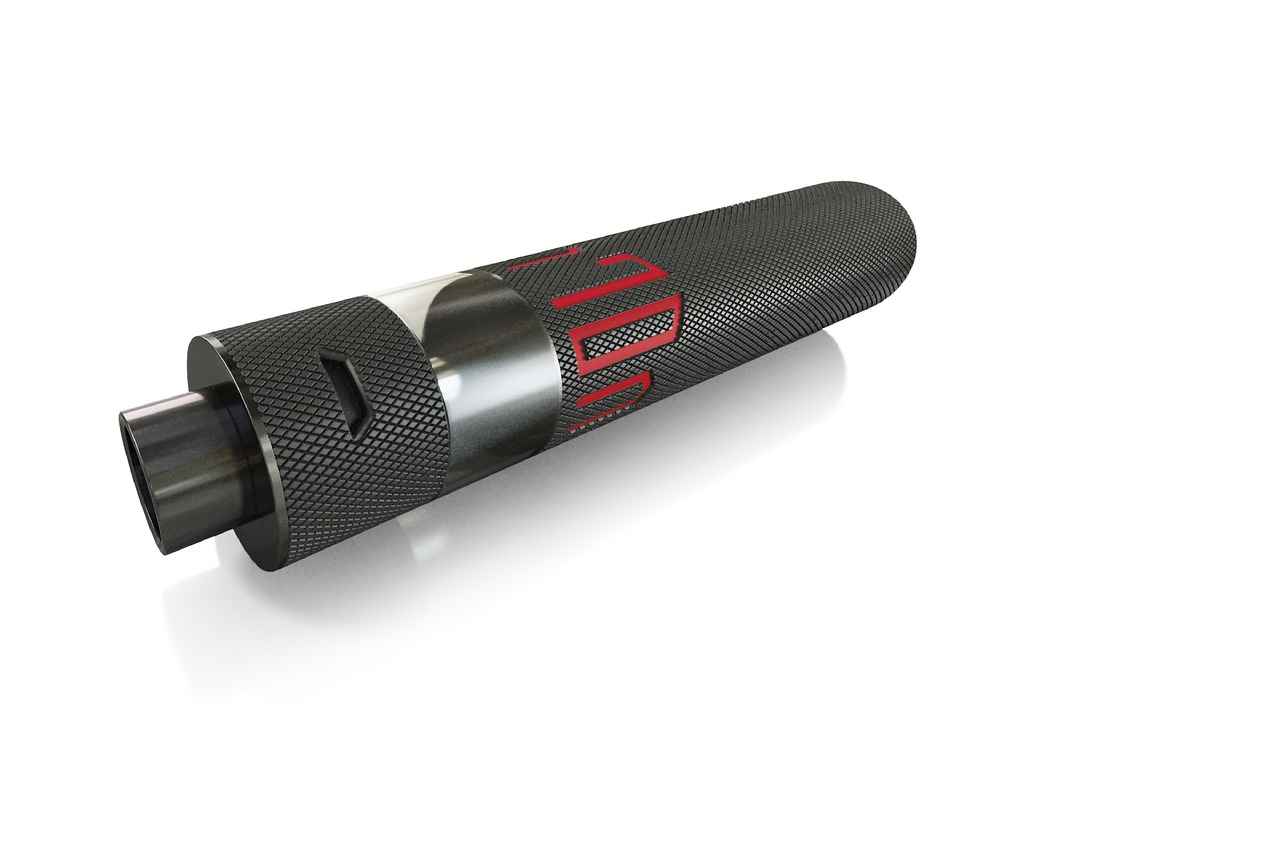Choosing the right vape battery is essential for ensuring optimal performance and safety in your vaping experience. With various options available, understanding the specifications and features of vape batteries can make a significant difference in how your device operates. This guide is designed to help you navigate the complexities of selecting the appropriate battery for your device.
There are several types of vape batteries, but the most common are:
- Lithium-Ion Batteries: Known for their high energy density and rechargeability.
- 18650 Batteries: A popular choice among vapers due to their versatility and performance.
- Built-in Batteries: These are integrated into the device, offering convenience but limited to the device’s specifications.
Battery size is crucial for compatibility with your device. Always check the dimensions and specifications provided by the manufacturer. A mismatch can lead to poor performance or even damage to your device.
The capacity of a battery, measured in milliampere-hours (mAh), indicates how long it can power your device. For heavy users, a battery with a higher mAh rating is recommended to avoid frequent recharging.
Voltage significantly affects your vape’s performance. Higher voltage can enhance flavor production and vapor density. It’s essential to match the voltage of your battery with your device’s requirements for optimal results.
The amp rating indicates the maximum current a battery can safely discharge. Choosing a battery with an appropriate amp rating is crucial to prevent overheating and potential hazards.
Not all batteries are created equal. Look for batteries that have safety features such as:
- Over-discharge protection
- Short circuit protection
- Temperature control
Brand reputation often reflects quality. Some of the top brands in the market include:
- Samsung: Renowned for reliability.
- LG: Offers high-performance batteries.
- Sony: Known for innovative technology.
Understanding battery specifications is vital for making informed decisions. Key terms to look for include:
- mAh: Indicates capacity.
- Voltage: Affects performance.
- Amp rating: Shows discharge capability.
Avoid batteries that lack proper certifications or come from unknown manufacturers. Poor quality batteries can lead to safety hazards and subpar performance.
Proper maintenance can significantly extend the life of your vape battery. Here are some tips:
- Store batteries in a cool, dry place.
- Avoid overcharging.
- Regularly clean the battery contacts.
Recognizing signs of damage is crucial for safety. Look for:
- Swelling or deformation
- Leaking
- Unusual heat during charging
Improper disposal of batteries can harm the environment. Always recycle batteries at designated facilities or follow local regulations for safe disposal.

What Are the Different Types of Vape Batteries?
When it comes to vaping, selecting the right battery is essential for both performance and safety. Understanding the different types of vape batteries available on the market can significantly enhance your vaping experience. This section delves into the most common battery types, including lithium-ion and 18650 batteries, ensuring you make an informed choice.
Vape batteries come in various types, each designed for specific devices and usage patterns. Here’s a closer look at the most prevalent types:
- Lithium-Ion Batteries: These batteries are widely used in vaping devices due to their high energy density and long lifespan. They are rechargeable and typically come in various sizes, making them versatile for different devices.
- 18650 Batteries: A specific type of lithium-ion battery, the 18650 is popular among advanced vapers. These cylindrical batteries are known for their high capacity and discharge rates, making them suitable for sub-ohm vaping and high-wattage devices.
- Internal Batteries: Many beginner-friendly vape pens come with built-in batteries. While convenient, these batteries are often non-removable, which can limit their lifespan and requires the entire device to be replaced when the battery degrades.
- LiPo Batteries: Lithium Polymer (LiPo) batteries are less common but are favored in high-performance devices due to their lightweight and flexible design. They can be shaped to fit specific device requirements but require careful handling to avoid damage.
Each battery type has its advantages and drawbacks, making it vital to consider your vaping habits and device compatibility when making a choice.
Choosing the right battery goes beyond just picking a type. You must also consider the size and capacity of the battery. Here are some key factors:
- Size: Ensure that the battery fits your device. For instance, 18650 batteries are not interchangeable with devices designed for smaller batteries.
- Capacity: Measured in milliampere-hours (mAh), a higher capacity means longer usage time. Consider your vaping frequency to select a battery that meets your needs.
- Discharge Rate: The amp rating of a battery indicates how quickly it can discharge. For high-wattage devices, a battery with a higher amp rating is essential to prevent overheating or damage.
Battery safety cannot be overlooked in vaping. Always choose batteries from reputable brands and check for safety certifications. Additionally, it’s essential to avoid using damaged batteries and to follow proper charging practices to mitigate risks.
In conclusion, understanding the various types of vape batteries is crucial for enhancing your vaping experience. By considering the battery type, size, capacity, and safety features, you can make an informed decision that aligns with your vaping habits and device requirements.

How to Determine the Right Battery Size?
Choosing the right battery size is critical for ensuring compatibility with your device. The dimensions and specifications of a battery can significantly impact performance, safety, and overall user experience. In this section, we will delve deeper into the factors that influence battery selection, helping you make an informed decision.
The size of your vape battery directly affects its fit within your device, as well as its performance. A battery that is too large may not fit properly, while a battery that is too small may not provide sufficient power. It is essential to consider both the physical dimensions and the electrical specifications to find a suitable match.
- Length: The length of the battery must align with the device’s battery compartment. A mismatch can lead to physical damage or operational failure.
- Diameter: The diameter affects how snugly the battery fits. An overly wide battery can cause strain on the device’s connectors, while a narrow one may lead to poor contact.
- Weight: Heavier batteries may alter the balance of the device, affecting the overall handling and user experience.
When selecting a battery, it’s essential to consider its specifications:
- Voltage: This indicates the power output and affects the flavor and vapor production. Ensure the voltage matches your device’s requirements.
- Capacity (mAh): A higher capacity means longer usage time. Assess your vaping habits to determine the ideal mAh for your needs.
- Amp Rating: This indicates how much current the battery can safely deliver. Choose a battery with an amp rating that meets or exceeds your device’s requirements.
Before purchasing a battery, always consult your device’s manual or manufacturer’s website. This will provide specific details on compatible battery sizes and types. Additionally, user reviews and forums can offer insights into real-world performance and compatibility experiences.
- Ignoring Manufacturer Recommendations: Always prioritize the specifications recommended by the manufacturer to avoid safety hazards.
- Overlooking Battery Age: Older batteries may not perform as expected, even if they fit correctly. Always check the manufacturing date.
- Choosing Based on Price Alone: While cost is a factor, quality should never be compromised. Investing in a reliable battery pays off in the long run.
In summary, selecting the right battery size involves considering both physical dimensions and specifications. By understanding the importance of these factors and avoiding common pitfalls, you can ensure optimal performance and safety for your vaping device. Always prioritize compatibility and quality to enhance your overall experience.
What Is the Importance of Battery Capacity?
Understanding battery capacity is essential for anyone looking to optimize their vaping experience. Battery capacity, typically measured in milliampere-hours (mAh), indicates how long your vape device can operate before needing a recharge. This is particularly important for daily vapers who rely on their devices throughout the day.
When assessing battery capacity, it’s crucial to consider your personal vaping habits. For instance, if you frequently use your device at higher wattages, you may require a battery with a higher capacity to sustain longer usage periods. Conversely, if you tend to vape less frequently or at lower settings, a battery with a lower mAh rating might suffice.
To better understand how to choose the right battery capacity, consider the following factors:
- Frequency of Use: If you vape multiple times a day, a battery with a capacity of 3000 mAh or more is advisable to avoid frequent recharging.
- Vaping Style: Sub-ohm vapers who enjoy producing large clouds typically consume more power, necessitating a battery with a higher capacity.
- Device Compatibility: Always ensure that the battery you choose is compatible with your device’s specifications. Some devices may require specific battery types or sizes.
It’s also important to note that higher capacity batteries may take longer to charge. Therefore, if you’re in a hurry, you might want to balance your choice between capacity and charging time. Additionally, consider investing in a quality charger to ensure the longevity of your battery.
In summary, the importance of battery capacity cannot be overstated. It directly influences how long your device can operate before needing a recharge and can significantly impact your overall vaping experience. By carefully assessing your vaping habits and choosing the appropriate battery capacity, you can ensure that your device performs optimally while meeting your personal needs.
How Does Voltage Impact Performance?
Understanding the impact of voltage on your vape’s performance is essential for achieving the best flavor and vapor density. Voltage is a crucial factor that influences the overall vaping experience, and knowing how to optimize it can lead to more satisfying sessions.
Voltage refers to the electrical potential difference that drives current through your vape device. In simple terms, it is the power source that fuels your device. Higher voltage levels can produce more heat, which can enhance the vaporization of e-liquids, leading to richer flavor profiles and thicker vapor clouds.
The relationship between voltage and flavor production is significant. When you increase the voltage, the coil in your vape heats up more quickly and reaches higher temperatures. This process can lead to the following:
- Enhanced Flavor Extraction: Higher temperatures can extract more flavor compounds from the e-liquid, resulting in a more robust taste.
- Burnt Taste Risk: However, it’s essential to find a balance; excessively high voltage can cause the wick to burn, leading to an unpleasant burnt flavor.
Vapor density refers to the thickness and richness of the vapor produced. Increasing the voltage can significantly enhance vapor density due to:
- Increased Vapor Production: Higher voltage allows for more e-liquid to be vaporized in a shorter amount of time, resulting in denser clouds.
- Heat Generation: More heat means more vapor; however, it’s crucial to avoid overheating, which can lead to decreased quality.
Every vape device is designed to operate within a specific voltage range. Here are some tips for determining the optimal voltage:
- Check Manufacturer Recommendations: Always refer to the manufacturer’s guidelines for voltage settings.
- Experiment Gradually: Start at a lower voltage and gradually increase it while paying attention to the flavor and vapor density.
- Use a Variable Voltage Device: These devices allow you to adjust the voltage, giving you control over your vaping experience.
While experimenting with voltage can enhance your vape experience, safety should always be a priority. Consider the following:
- Battery Compatibility: Ensure your battery can handle higher voltage levels without risk of overheating.
- Wick Material: Different wick materials can tolerate varying heat levels; choose accordingly to avoid dry hits.
In conclusion, understanding how voltage impacts your vape’s performance is pivotal for optimizing your experience. By adjusting voltage thoughtfully, you can enhance flavor production and vapor density, leading to a more enjoyable vaping journey. Remember to prioritize safety while exploring the potential of your device.
What Is the Role of Amp Rating?
The amp rating of a battery is a critical specification that determines its performance and safety in various devices, particularly in vaping. Understanding this rating is essential for selecting a battery that meets the needs of your device while ensuring a safe vaping experience.
The amp rating indicates the maximum current a battery can safely discharge without overheating or failing. Choosing a battery with the right amp rating is crucial because:
- Performance: A battery with a low amp rating may not provide enough power for high-performance devices, leading to poor vapor production and flavor.
- Safety: Using a battery that exceeds its amp rating can cause overheating, potential leaks, or even explosions in extreme cases.
- Longevity: Batteries that are consistently pushed beyond their amp ratings tend to degrade faster, reducing their overall lifespan.
When selecting a battery, consider the following factors to ensure you choose one with an appropriate amp rating:
- Device Specifications: Check the manufacturer’s guidelines for your device. Most devices will specify the required amp rating for optimal performance.
- Vaping Style: If you prefer sub-ohm vaping, you will need a battery with a higher amp rating to support the increased power demands.
- Battery Chemistry: Different battery chemistries, such as lithium-ion or lithium polymer, have varying discharge capabilities. Make sure to select a battery type that aligns with your device’s requirements.
It’s also important to differentiate between continuous discharge ratings and pulse discharge ratings. Continuous ratings indicate the maximum current the battery can handle over an extended period, while pulse ratings refer to short bursts of higher current. For most vaping applications, focusing on the continuous rating is essential.
If you’re unsure about the amp rating of a battery, consider using a multimeter to measure the current output. This can help you verify whether the battery meets your device’s specifications. However, ensure you follow safety protocols when conducting these tests.
Using a battery with an insufficient amp rating can lead to several warning signs:
- Overheating: If the battery feels excessively hot during use, it may be struggling to meet the power demands.
- Short Battery Life: A battery that discharges quickly may not be able to handle the device’s requirements.
- Inconsistent Performance: If you notice fluctuations in vapor production or flavor intensity, it may indicate that the battery is not performing adequately.
In summary, the amp rating is a vital factor in selecting the right battery for your vaping device. By understanding its role and carefully considering the specifications of your device, you can ensure a safer and more enjoyable vaping experience.
How to Identify Quality and Safety Features?
When it comes to vaping, the quality and safety of your battery can significantly impact your overall experience. Not all batteries are created equal; thus, understanding what constitutes a reliable vape battery is essential for both performance and safety. In this section, we will explore key indicators to help you identify quality and safety features in vape batteries.
- Brand Reputation: Look for batteries from reputable brands known for their quality control and safety standards. Brands with positive reviews and a loyal following often provide more reliable products.
- Certification Marks: Ensure that the battery has passed safety certifications, such as UL or CE. These certifications indicate that the battery has been tested for safety and performance.
- Quality Materials: High-quality batteries are typically made from durable materials that can withstand heat and pressure. Look for batteries that specify the use of premium lithium-ion cells.
- Clear Specifications: A reliable battery will have clear specifications on its packaging, including capacity (mAh), voltage, and amp rating. This transparency helps you make an informed choice.
Safety features are crucial for preventing accidents and ensuring the longevity of your vape battery. Here are some essential safety features to look for:
- Overcharge Protection: This feature prevents the battery from being charged beyond its capacity, which can lead to overheating and potential hazards.
- Short-Circuit Protection: A battery with short-circuit protection can automatically shut off if it detects a short circuit, reducing the risk of fire or explosion.
- Temperature Control: Batteries equipped with temperature control mechanisms can prevent overheating, ensuring safe operation during use.
Understanding battery specifications is vital for safety and performance. Here are the key specifications to consider:
- Capacity (mAh): This indicates how much energy the battery can store. A higher mAh rating generally means longer usage time.
- Voltage: Check the voltage rating to ensure compatibility with your device. A mismatch can lead to poor performance or damage.
- Amp Rating: This indicates the maximum current the battery can safely discharge. Ensure that the amp rating meets or exceeds your device’s requirements.
When selecting a vape battery, it’s essential to avoid common pitfalls that can lead to poor performance or safety hazards:
- Avoid Unbranded Batteries: Unbranded or generic batteries may not adhere to safety standards and can pose serious risks.
- Check for Counterfeits: Be wary of batteries sold at unusually low prices, as they may be counterfeit and lack essential safety features.
- Read Reviews: Before purchasing, read reviews and user experiences to gauge the reliability and safety of the battery.
In summary, identifying quality and safety features in vape batteries is crucial for ensuring a reliable and enjoyable vaping experience. By paying attention to brand reputation, certification marks, and essential specifications, you can make informed decisions that prioritize both performance and safety.

What Are the Best Brands for Vape Batteries?
When it comes to choosing a vape battery, brand reputation often serves as a reliable indicator of quality and reliability. With numerous options available in the market, it’s essential to understand which brands stand out and what they offer. This section will review some of the top brands in the vape battery market, emphasizing their strengths and weaknesses.
| Brand | Strengths | Weaknesses |
|---|---|---|
| Samsung | High capacity, excellent performance, widely trusted | Can be more expensive than competitors |
| LG | Reliable quality, good balance of price and performance | Limited availability in some regions |
| Sony | Strong amp ratings, great for sub-ohm vaping | Less variety in battery sizes |
| Efest | Affordable, decent performance for casual users | Lower longevity compared to premium brands |
| MXJO | Good value for money, solid performance | Quality control can be inconsistent |
Each of these brands has carved a niche in the vape battery market, catering to different user needs. For instance, Samsung batteries are known for their high capacity and reliability, making them a preferred choice for those seeking long-lasting power. However, they tend to be pricier than some alternatives.
LG offers a great balance between price and performance, making them suitable for both beginners and experienced vapers. While they may not have the same extensive range as others, their quality is consistently high.
Sony batteries are often favored by sub-ohm vapers due to their strong amp ratings, providing the necessary power for intense vaping sessions. However, their limited variety in battery sizes may not meet everyone’s needs.
On the other hand, Efest and MXJO are more budget-friendly options. While Efest provides decent performance for casual users, their longevity may not match that of premium brands. MXJO offers good value for money, but users should be aware of potential quality control issues.
Ultimately, the best brand for you will depend on your specific vaping style and requirements. It’s essential to consider factors such as capacity, amp rating, and price when making your choice.
- Research user reviews to gauge real-world performance.
- Check for authenticity to avoid counterfeit products.
- Consider your vaping habits to select the appropriate battery type.
In summary, understanding the strengths and weaknesses of various vape battery brands is crucial for making an informed decision. By prioritizing quality and reliability, you can enhance your vaping experience significantly.
How to Read Battery Specifications?
When it comes to selecting the right vape battery, understanding battery specifications is essential for making an informed choice. This section will break down the common terms and numbers you’ll encounter on battery packaging, helping you navigate this critical aspect of your vaping experience.
Battery specifications can often seem overwhelming, but familiarizing yourself with a few key terms can simplify the process. Here are the most important specifications to consider:
- Capacity (mAh): This is the measure of how much energy a battery can store, expressed in milliampere-hours (mAh). A higher mAh rating means a longer-lasting battery, which is crucial for heavy users. For instance, a battery with a capacity of 3000 mAh will last significantly longer than one with 1500 mAh.
- Voltage (V): Voltage indicates the potential energy the battery can provide. Most vape batteries operate between 3.7V and 4.2V. Understanding voltage is vital as it directly impacts the performance and flavor production of your device.
- Amp Rating (A): This specification reveals the maximum current a battery can safely discharge. Selecting a battery with an appropriate amp rating for your device ensures that it can handle the power demands without overheating or causing damage.
When examining a battery’s packaging, you will often find a series of numbers and letters. Here’s how to interpret them:
Example: 18650 3000mAh 3.7V 20A- 18650: Battery size/type- 3000mAh: Capacity- 3.7V: Voltage- 20A: Maximum continuous discharge
Understanding these labels can significantly aid in selecting a battery that meets your vaping needs. Always ensure that the specifications align with your device’s requirements to avoid performance issues.
Not all batteries are created equal. It’s crucial to choose batteries from reputable brands known for their quality and safety standards. Look for batteries that have been tested and certified to meet industry regulations. This can help ensure you are using a reliable product that will not only enhance your vaping experience but also keep you safe.
When choosing a vape battery, it’s important to avoid certain pitfalls:
- Ignoring Compatibility: Always check that the battery’s specifications match your device’s requirements.
- Choosing Based on Price Alone: While it may be tempting to go for the cheapest option, investing in a quality battery can save you from safety hazards and poor performance.
- Overlooking Safety Features: Ensure that the battery has built-in safety features like overcharge protection and short-circuit prevention.
By understanding battery specifications and making informed choices, you can enhance your vaping experience while ensuring safety and performance. Always prioritize quality and compatibility to enjoy a seamless vaping journey.
What Should You Avoid When Choosing a Battery?
When selecting a vape battery, it is essential to make informed choices to ensure both performance and safety. Unfortunately, many users fall into common traps that can lead to subpar battery performance or even hazardous situations. Understanding what to avoid can help you select a battery that enhances your vaping experience while minimizing risks.
- Ignoring Compatibility – One of the most significant mistakes is choosing a battery that is not compatible with your device. Always check the manufacturer’s specifications to ensure the battery fits your vape mod.
- Overlooking Amp Ratings – The amp rating of a battery indicates how much current it can safely discharge. Selecting a battery with an insufficient amp rating can lead to overheating or even battery failure. Always match the amp rating with your device’s requirements.
- Choosing Low-Quality Batteries – Not all batteries are created equal. Opting for cheaper, low-quality batteries can compromise safety and performance. Look for reputable brands that provide detailed specifications and safety features.
- Neglecting Battery Capacity – Battery capacity, measured in milliampere-hours (mAh), affects how long your device can operate. A battery with a lower capacity may require frequent recharging, which can be inconvenient for regular users.
- Disregarding Voltage Requirements – Voltage is crucial for optimal performance. Using a battery with the wrong voltage can lead to poor flavor production and insufficient vapor density. Always ensure that the voltage aligns with your device’s specifications.
- Failing to Check for Damage – Before using a battery, inspect it for any signs of damage, such as dents or corrosion. Damaged batteries pose a significant safety risk and should be replaced immediately.
- Improper Storage – Storing batteries incorrectly can lead to issues such as short-circuiting or degradation. Always store batteries in a cool, dry place, away from conductive materials.
- Not Following Charging Guidelines – Each battery comes with specific charging requirements. Failing to adhere to these guidelines can shorten the battery’s lifespan or cause safety hazards. Always use the recommended charger for your battery type.
By avoiding these common pitfalls, you can ensure that you select a vape battery that not only performs well but also keeps you safe. Always prioritize quality and compatibility to enhance your vaping experience.

How to Maintain Your Vape Battery for Longevity?
Maintaining your vape battery is essential for ensuring its longevity and optimal performance. With proper care, you can significantly extend the life of your battery, ensuring a more enjoyable vaping experience. This section outlines practical tips for the care and safe storage of your vape batteries.
Regular maintenance of your vape battery not only prolongs its lifespan but also enhances safety. A well-maintained battery performs better, provides consistent power, and reduces the risk of malfunctions or hazards. Neglecting battery care can lead to decreased performance, shorter usage times, and potential safety risks.
- Keep Your Batteries Clean: Regularly clean the terminals of your batteries with a dry cloth to remove any residue or dirt. This ensures a good connection with your device and prevents misfires.
- Avoid Overcharging: Overcharging can lead to battery swelling or overheating. Always use a compatible charger and unplug your battery once it reaches full charge.
- Store Batteries Safely: When not in use, store your batteries in a cool, dry place away from direct sunlight. Consider using a battery case to protect them from physical damage and short circuits.
- Monitor Battery Health: Regularly inspect your batteries for signs of wear, such as dents, scratches, or corrosion. Replace any damaged batteries immediately to ensure safety.
- Charge at the Right Temperature: Avoid charging your batteries in extreme temperatures, as this can affect performance. The ideal charging temperature is between 20°C to 25°C (68°F to 77°F).
Proper storage is crucial for maintaining battery health. Always store your batteries in a protective case to prevent accidental contact with metal objects, which can lead to short circuits. Additionally, consider storing batteries at around 40% charge if you plan to leave them unused for an extended period. This helps to maintain the battery’s health and capacity.
Being aware of the signs of battery damage is vital for safety. Look for the following indicators:
- Swelling: A swollen battery is a clear sign of damage and should be disposed of immediately.
- Leaking: Any signs of leakage, such as a sticky residue, indicate that the battery is compromised and needs to be replaced.
- Unusual Heat: If your battery becomes excessively hot during use or charging, it may be time to replace it.
Improper disposal of vape batteries can have harmful effects on the environment. Always dispose of your batteries at designated recycling centers or through programs that accept electronic waste. Many local municipalities offer battery recycling options, ensuring that harmful materials are handled safely.
By following these maintenance tips and practices, you can significantly enhance the life of your vape battery while ensuring your safety and the environment’s well-being. Remember, a little care goes a long way in preserving your vaping experience!
What Are the Signs of Battery Damage?
When it comes to ensuring your vaping experience is both enjoyable and safe, recognizing the signs of battery damage is of utmost importance. Batteries are the lifeblood of your vaping device, and any signs of wear or damage can lead to serious safety hazards. In this section, we will explore the key indicators that suggest your battery may need replacement, helping you to avoid potential risks.
- Physical Damage: One of the most evident signs of battery damage is visible physical harm. Look for any dents, scratches, or bulges on the battery casing. If you notice any of these issues, it is crucial to replace the battery immediately, as they can lead to leaks or even explosions.
- Overheating: If your battery becomes excessively hot during use or charging, this is a clear warning sign. Batteries should remain cool to the touch. Overheating can indicate internal damage or a malfunction, potentially leading to a fire hazard.
- Leaking: Any signs of leakage, such as a sticky residue or corrosion around the battery terminals, should be taken seriously. Leaking batteries can release harmful chemicals and pose a significant safety risk.
- Short Battery Life: If you find that your battery is not holding a charge as long as it used to, it may be time for a replacement. A significant drop in battery life can indicate that the battery is nearing the end of its useful life.
- Swelling: Swelling or puffing of the battery is a serious issue that should not be ignored. This can happen due to overcharging or internal damage. If you notice any swelling, discontinue use immediately and dispose of the battery safely.
Additionally, it is essential to pay attention to any unusual smells or sounds coming from your battery. A hissing sound or a strange odor can indicate a problem that requires immediate attention. Always prioritize safety by regularly inspecting your batteries for any of these warning signs.
In summary, being vigilant about the condition of your vape battery is crucial for your safety and the longevity of your device. If you observe any of the signs mentioned above, do not hesitate to replace your battery. By doing so, you can ensure a safer and more enjoyable vaping experience.
How to Dispose of Vape Batteries Responsibly?
When it comes to vaping, battery disposal is often overlooked, yet it is a crucial aspect of responsible vaping. Improper disposal of batteries can have detrimental effects on the environment, including soil and water contamination. Therefore, understanding how to dispose of vape batteries responsibly is essential for every vaper.
Vape batteries, particularly lithium-ion types, contain hazardous materials that can harm the ecosystem if not disposed of correctly. These materials can leach into the ground, causing pollution and posing risks to wildlife. By disposing of batteries properly, you contribute to a healthier planet and reduce the potential for environmental damage.
- Battery Recycling Programs: Many local municipalities and retailers offer battery recycling programs. Check with your local waste management facility to find out where you can drop off used batteries.
- Retail Take-Back Initiatives: Some vape shops and electronics stores have take-back programs that allow you to return old batteries for safe disposal.
- Specialized Recycling Centers: Look for recycling centers that specialize in electronic waste. They are equipped to handle hazardous materials safely.
Before recycling your vape batteries, it’s essential to prepare them properly:
- Seal the Terminals: Use electrical tape to cover the battery terminals. This prevents accidental short-circuiting during transport.
- Store Safely: Keep used batteries in a cool, dry place until you can dispose of them. Avoid exposing them to extreme temperatures.
Many areas have specific regulations regarding battery disposal. It is crucial to familiarize yourself with these local laws to ensure compliance. Some regions may impose fines for improper disposal, so staying informed can save you from legal troubles.
Recycling vape batteries not only helps the environment but also contributes to resource conservation. By recycling, valuable materials like lithium, cobalt, and nickel can be recovered and reused, reducing the need for new raw materials. This process also decreases energy consumption and greenhouse gas emissions associated with mining and manufacturing.
As a member of the vaping community, you can play a vital role in promoting responsible disposal practices. Here are some ways to raise awareness:
- Educate Peers: Share information about the importance of battery recycling with fellow vapers.
- Social Media Advocacy: Use your social media platforms to highlight local recycling options and the environmental impact of improper disposal.
- Participate in Community Clean-Up Events: Engage in or organize events focused on cleaning up areas affected by electronic waste.
In conclusion, disposing of vape batteries responsibly is not only a personal responsibility but also a collective one. By understanding eco-friendly disposal methods, preparing batteries for recycling, and spreading awareness, we can all contribute to a healthier environment. Remember, every small action counts towards making a significant impact.
Frequently Asked Questions
- What type of vape battery is best for beginners?
For beginners, lithium-ion batteries are often recommended due to their reliability and ease of use. They provide a good balance between performance and safety, making them a solid choice for those new to vaping.
- How do I know if a battery is compatible with my device?
Check your device’s specifications for the required battery size and type. Most devices will specify the compatible battery models, ensuring you choose one that fits perfectly without any issues.
- Why is battery capacity important?
Battery capacity, measured in mAh, directly affects how long you can use your device before needing a recharge. A higher capacity means longer usage time, which is crucial for heavy vapers.
- What should I look for in battery safety features?
Look for features like overcharge protection, short-circuit protection, and a venting mechanism. These features help prevent accidents and ensure that your vaping experience is safe.
- How can I extend the life of my vape battery?
To prolong your battery’s lifespan, store it in a cool, dry place, avoid overcharging, and regularly clean the contacts. Proper care can make a significant difference in battery longevity.
- What are the signs that my vape battery is damaged?
Watch for signs like swelling, leaking, or unusual heat. If you notice any of these symptoms, it’s crucial to replace the battery immediately to prevent safety hazards.
- How should I dispose of old vape batteries?
Always dispose of vape batteries at designated recycling centers or battery drop-off locations. This ensures they are handled responsibly and reduces environmental impact.














